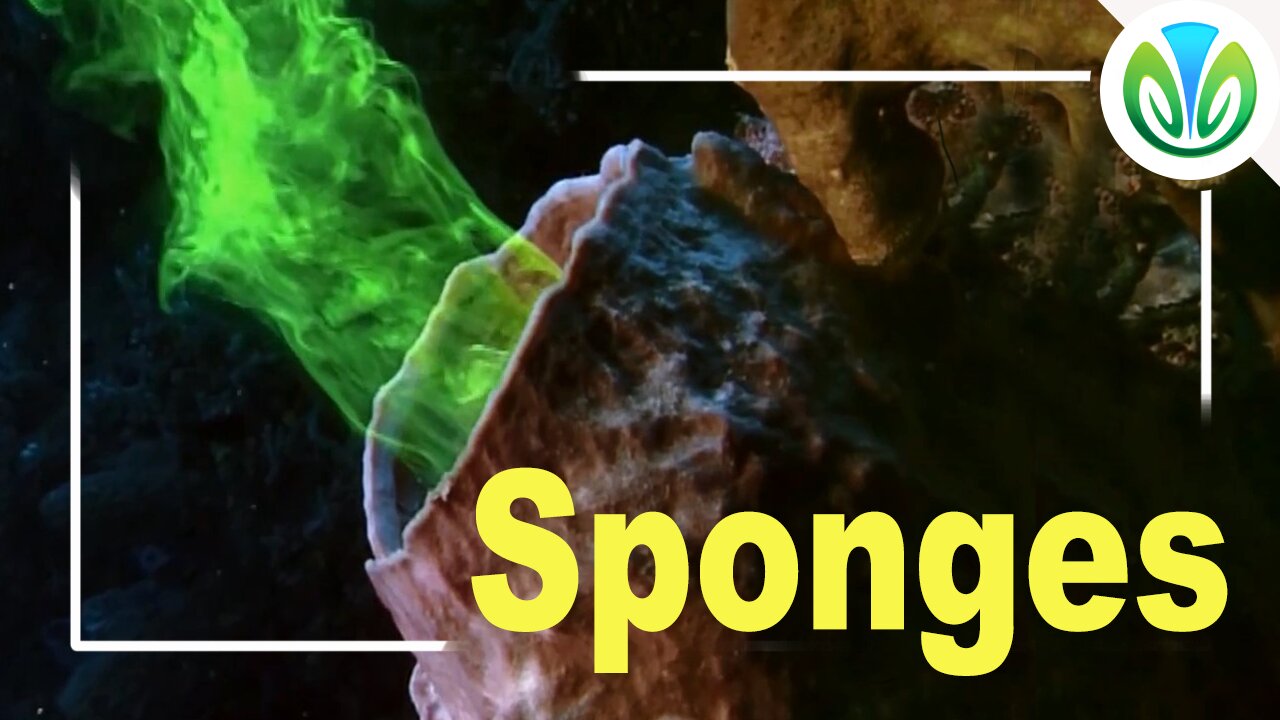Premium Only Content

Sponges:Filter feeding made visible | Nature VN
A florescent dye is injected next to a sponge and the sponge quickly pumps the dye through its body. This demonstrates that sponges actively pump large quantities of water through their bodies in order to extract tiny organisms for food from the water.
There are about 5000 species of sponges living in different freshwater and saltwater areas. Besides, many species create many different morphologies. Because they can live in many layers, combined with many marine algae, they can create many different colors. Sponges are not corals. They are like corals – motionless aquatic invertebrates. But they are still creatures with completely different anatomy and other properties. Regardless of these differences, sponges are still important inhabitants of coral reef ecosystems. This diverse population of organisms can affect water quality on reefs because they filter water, collect bacteria, and process carbon, nitrogen, and phosphorus. In nutrient-depleted coral reefs, some species are thought to have created biocarbon by excreting a form of "sponge droppings" that other organisms eat. Thus boosting productivity throughout the ecosystem. Most sponges are only a few centimeters in size, but some are tubular or non-shaped less than a centimeter; Others are tubular or branched, and can be one to two meters tall. Where the wide round blocks can be one to two meters in diameter. The size of a species can change with age; environmental conditions and food supply. Sponges are an ancient organism that is often confused with a plant species. They come in many shapes like tubes, branches, fingers, spheres or even amorphous. Besides, their color is also influenced by the water layer they live in. Besides helping creatures to hide, they also have economic value to humans.
- Remember to ''Subscribe to the channel'' to watch interesting videos
- Watch more interesting videos at : https://bitly.com.vn/ktlyjp
-
 LIVE
LIVE
Drew Hernandez
8 hours agoISRAEL SAYS THEY DON'T NEED AMERICA'S HELP IN THEIR WAR?
1,266 watching -
 LIVE
LIVE
Laura Loomer
2 hours agoEP127: Islamists Work To Split MAGA Base
2,124 watching -
 LIVE
LIVE
TimcastIRL
2 hours agoDemocrat Party IS DEAD, Donors FLEE Amid Record Low Polls, Trump ROASTS Juneteenth | Timcast IRL
8,495 watching -
 LIVE
LIVE
Barry Cunningham
3 hours agoIS PRESIDENT TRUMP USHERING IN THE NEW APOCALYPSE? AND MORE NEWS!
5,275 watching -
 LIVE
LIVE
SpartakusLIVE
4 hours ago#1 Spartan SPECIALIST Champion || Last Stream till SECRET EVENT
307 watching -
 LIVE
LIVE
MyronGainesX
22 hours ago $9.23 earnedOSS Subathon: Tucker vs Ted Cruz, Israel Iran War, Karen Read, Diddy, Tate v Bonnie Blue And More!
3,326 watching -
 13:25
13:25
Tundra Tactical
2 hours ago $0.04 earnedSENATORS Must Hear Our Voice on HR1 NOW!!!
95 -
 1:02:25
1:02:25
BonginoReport
6 hours agoDems Boycott Probe on Biden’s Fitness to Serve w/ Sean Spicer - (Ep.73)
64.2K48 -
 8:14
8:14
MattMorseTV
8 hours ago $3.57 earnedBombshell VICTORY in the Supreme Court.
28.5K34 -
 LIVE
LIVE
TheSchleppy
1 hour ago✨TheSchleppy✨YAKUZA LIKE A DRAGON! GEARS OF WAR PREMIUM LATER
68 watching